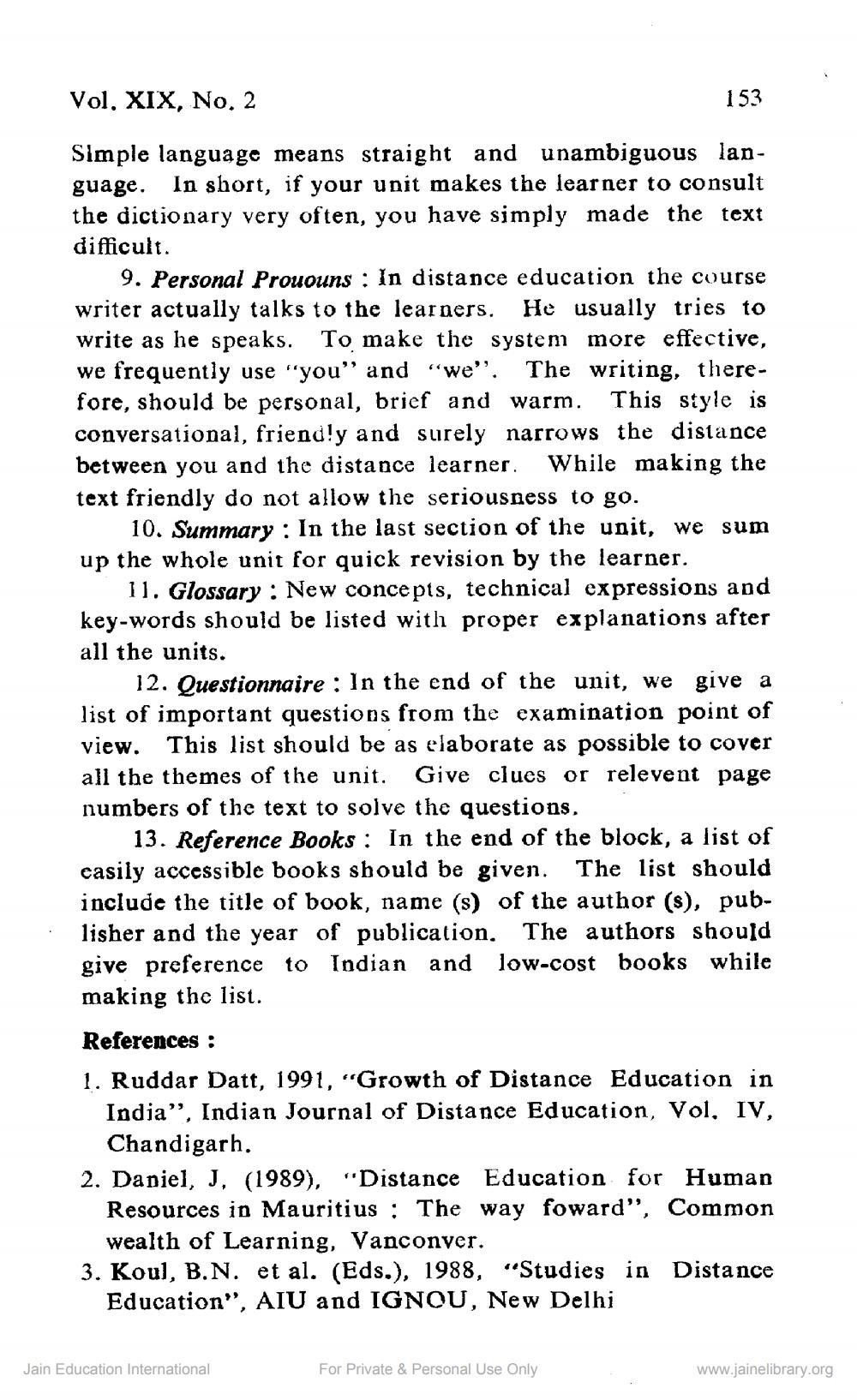________________
Vol. XIX, No. 2
153
Simple language means straight and unambiguous language. In short, if your unit makes the learner to consult the dictionary very often, you have simply made the text difficult.
9. Personal Prououns: In distance education the course writer actually talks to the learners. He usually tries to write as he speaks. To make the system more effective, we frequently use "you" and "we". The writing, therefore, should be personal, brief and warm. This style is conversational, friendly and surely narrows the distance between you and the distance learner. While making the text friendly do not allow the seriousness to go.
10. Summary: In the last section of the unit, we sum up the whole unit for quick revision by the learner.
11. Glossary: New concepts, technical expressions and key-words should be listed with proper explanations after all the units.
12. Questionnaire: In the end of the unit, we give a list of important questions from the examination point of view. This list should be as elaborate as possible to cover all the themes of the unit. Give clues or relevent page numbers of the text to solve the questions,
13. Reference Books: In the end of the block, a list of easily accessible books should be given. The list should include the title of book, name (s) of the author (s), publisher and the year of publication. The authors should give preference to Indian and low-cost books while making the list.
References:
1. Ruddar Datt, 1991, "Growth of Distance Education in India", Indian Journal of Distance Education, Vol. IV, Chandigarh.
2. Daniel, J. (1989), "Distance Education for Human Resources in Mauritius: The way foward", Common wealth of Learning, Vanconver.
3. Koul, B.N. et al. (Eds.), 1988, "Studies in Distance Education", AIU and IGNOU, New Delhi
Jain Education International
For Private & Personal Use Only
www.jainelibrary.org




